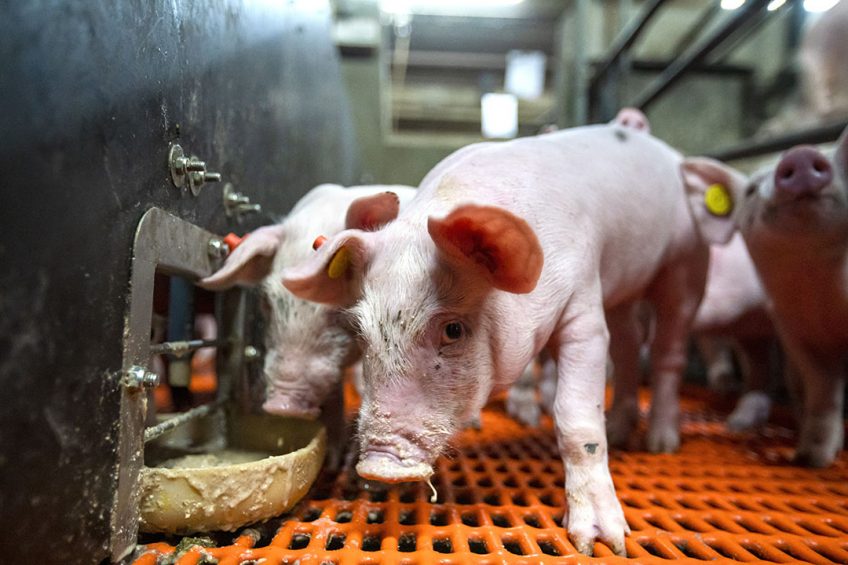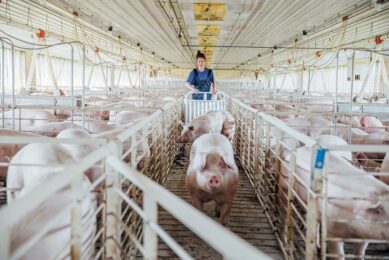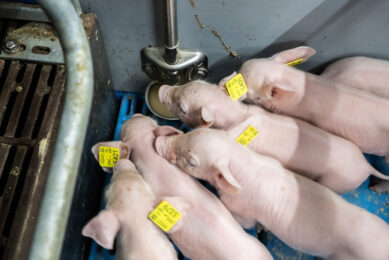Celery, cereals or peanuts? Piglets like variation

Dietary diversity seems a promising feeding strategy in getting piglets to eat during lactation.
That was the main conclusion of a study conducted by researchers at Wageningen University & Research, the Netherlands, which was published in the peer-reviewed journal Animal Behavior & Science.
The study is part of a longer research process in which they aim to find ways to get more piglets eating before weaning. The team wrote: “Timely intake of solid feed is essential to ease the nutritional change from sow’s milk to solid feed at weaning and thereby to reduce weaning-related problems. A significant percentage of piglets, however, do not or hardly consume solid feed before weaning.”
Effects of dietary variety in the feed
The research team therefore decided to study effects of dietary variety and presented the feed in substrate during lactation on the feeding behaviour and performance of piglets up to 2 weeks post-weaning.
The scientists provided the feed ad lib from day 4 in 2 feeders, with 4 bowls each. In a 2×2 arrangement, 40 litters received either creep feed:
- as a monotonous diet; or
- 4 feed items simultaneously, i.e. creep feed, celery, cereal honey loops and peanuts, as a diverse diet.
In addition, the feed was either provided:
- without substrate; or
- with substrate, i.e. sand, in 1 of the 2 feeders up to weaning.

Should straw be added to improve pig welfare? There are pros and cons
Stimulus for feed exploration and eating
The scientists observed that dietary diversity greatly stimulated feed exploration and eating (≥2.5 times), feed intake and the percentage of (good) eaters from early in lactation, and enhanced piglet growth towards weaning (by 29 g/day), although the piglets having a monotonous diet spent more time eating creep feed from day 18.
In their article, the team described that within the group of piglets receiving a monotonous diet, the litters supplied with a substrate litters consisted of more good eaters than those that had not.
At weaning (day 28), 4 piglets from the same treatment were grouped, in altogether 40 pens).
The group receiving diverse diet and then no substrate had the highest post-weaning feed intake and gain between day 5-15 and the lowest proportion of pigs with higher tail damage scores.
Effects regarding piglet behaviour remained inconclusive
However, effects regarding behaviour remained inconclusive, as piglets with a diverse diet had a lower and higher number of body lesions at 4 hours and day 15 post-weaning respectively, spent less time exploring the feed(er) and drinker and environment, and more time nosing pen mates than piglets provided a monotonous diet.
The scientists noticed that piglets provided with a substrate showed a reduction in total post-weaning feed intake, gain (particularly between day 0-2) and inactivity, increased levels of manipulation and aggression at week 1 and a higher number of body lesions at 4 hours and day 15 post-weaning.
Treatments not reinforced after weaning
In conclusion, the researchers wrote, “Dietary diversity seems a promising feeding strategy in getting piglets to eat during lactation. Provision of substrate in the feeder subtly stimulated foraging behaviour, but negatively impacted post-weaning adaptation, probably because treatments were not reinforced after weaning and piglets thus experienced loss of enrichment.”
The
scientific paper was written
by Anouschka Middelkoop, Manon A. van Marwijk, Bas Kemp and J. Elizabeth Bolhuis, all attached to Wageningen University & Research, the Netherlands.












